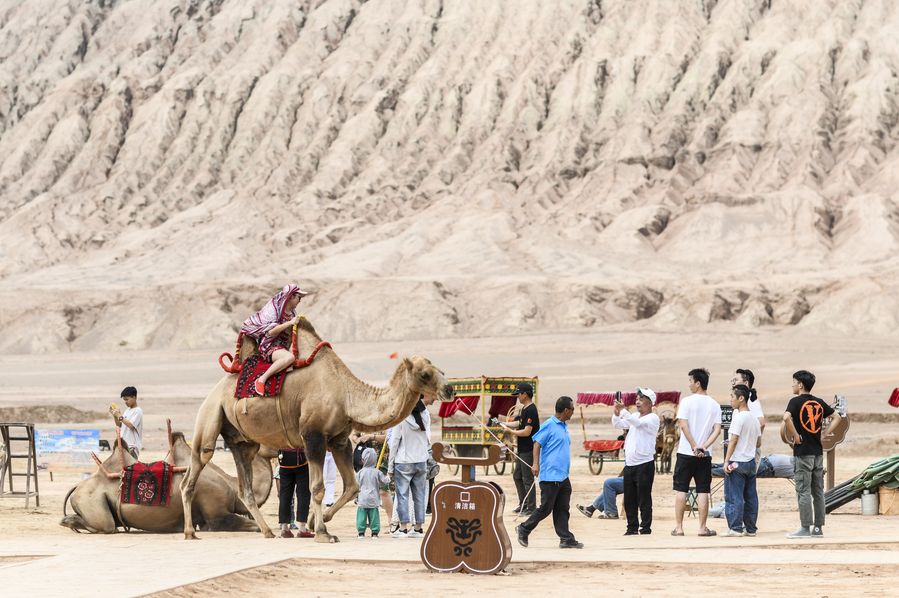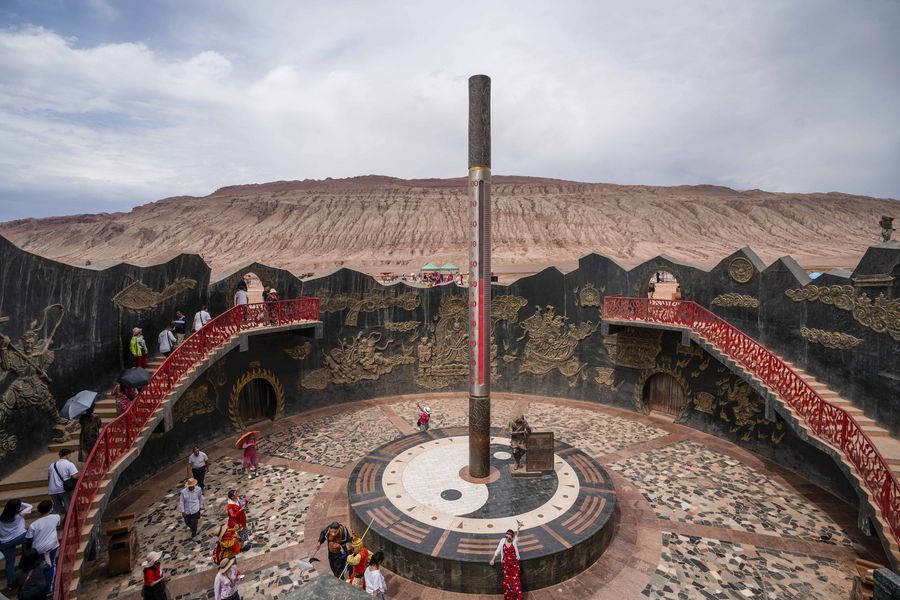
People visit the Flaming Mountains scenic spot in Turpan, northwest China's Xinjiang Uygur Autonomous Region, July 15, 2019. (Xinhua/Zhao Ge)
The Flaming Mountain looks like it's "burning" because of its red sandstones, though it doesn't have real flames as depicted in the literary works and its adapted films.
URUMQI, Sept. 27 (Xinhua) -- As noon draws near, the mercury in a 12-meter-high thermometer rises, reaching 40 degrees Celcius at the Flaming Mountain scenic area.
In the shape of the legendary Monkey King's golden cudgel, it once read 89 degrees Celcius in the summer of 2017, just 11 degrees shy of hitting the thermometer's limit.
The mountain is a famous place cited in the well-recognized Chinese classic literature "Xiyouji," or "Journey to the West," depicting a pilgrim on a journey to retrieve the Buddhist sutras from India. It is located in Turpan, known as a land of fire in northwest China's Xinjiang Uygur Autonomous Region.
The Flaming Mountain looks like it's "burning" because of its red sandstones, though it doesn't have real flames as depicted in the literary works and its adapted films.

People visit the Flaming Mountains scenic spot in Turpan, northwest China's Xinjiang Uygur Autonomous Region, July 15, 2019. (Xinhua/Zhao Ge)
The intense heat at the site could not hold fans of "Xiyouji" back from visiting the mountain that they first learned about from this classic novel.
Wang Jianping, general manager of the scenic area, said the mountain has received 860,000 visitors so far this year, close to the total number of visitors recorded last year.
"I read the novel as a child, and have watched the 'Xiyouji' TV series several times," said Wang Chunying, a girl who came from the eastern province of Shandong. She loves the story of the Monkey King, who used a palm-leaf fan to put out the flames on the very mountain.
The masterwork has been translated into many languages and published around the world since the 19th century. A TV series was produced in 1986, which has been aired more than 3,000 times in China.
At the site, visitors take pictures with bronze statues of major characters from the novel, while having cold drinks and ice cream to relieve the summer heat.
Excavated historical documents record the substantial Buddhist presence in Turpan through the numerous Buddhist temples.
Buddhist relics including the Bezeklik Thousand Buddha Caves are scattered all around the scenic area, which has set up a special exhibition hall showcasing artistic fresco copies in the caves.
"I came because of 'Xiyouji,' but was surprised to learn about the long and rich Buddhist culture here in Xinjiang," said Dai Xiao, a visitor from central China's Hubei Province. ■



